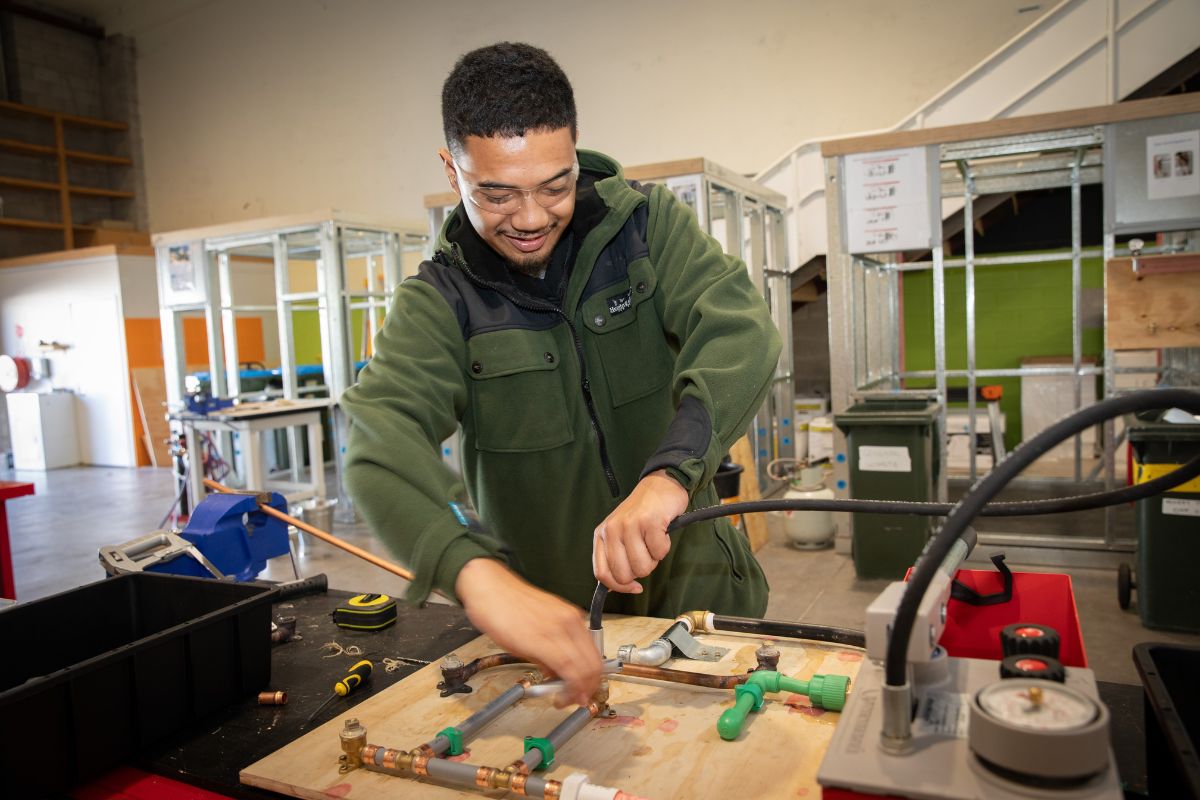Learning from New Zealand – Structuring the Post-16 Education Sector and Degree Apprenticeships

In July, the Edge Foundation undertook a virtual study exchange with colleagues in New Zealand. Over four sessions, we explored various innovative approaches, including structuring the post-16 education sector and degree apprenticeships. This exchange of best practice comes as both countries grapple with similar challenges in tertiary education and beyond. What might we learn from New Zealand’s experiences?

Lessons in tertiary education
A highlight of the visit was a presentation by Roger Smyth, an experienced consultant and renowned commentator on New Zealand’s tertiary education system. His insight into post-school education offers valuable lessons as the UK considers ways of creating our own unified tertiary system.
In the late 1980s, New Zealand embarked on a radical reform of its post-secondary education system. Their vision was to create a seamless system focused on the learner and their contribution to society and the economy. One key objective was to eliminate disparities in esteem between higher and vocational education – an issue that will be very familiar to anyone in the UK.
At the time, the New Zealand government brought all institutions under a single regulatory system. Universities lost their monopoly on degree offerings, and within a decade – in line with the reform’s aims – polytechnics were enrolling about 1/6 of all degree students. Despite their unified vision, however, vocational education followed a different track. While a new Industry Training Act in 1992 established industry-led organisations to assess skills needs, set standards, and manage training subsidies, the underpinning funding system was contestable and undifferentiated, leading to competition between industry training providers and polytechnics. To secure funding, this pushed polytechnics more towards degrees, diplomas, and community education, and away from traditional vocational education offerings.
At the turn of the century, New Zealand adopted a single tertiary education commission at arms length from the government. However, because the government also retained the contestable funding model, rivalry between different facets of the system again persisted. This shows that despite structural changes, New Zealand’s cultural attitudes and bureaucratic practices continued to reinforce the disparities between academic and vocational pathways. Today, New Zealand has finally implemented a unified funding system, which is supporting a broader cultural shift. However, their experience offers an important lesson as the UK explores tertiary models – namely, that a single authority does not guarantee a harmonised system.
Funding incentives must align with policy objectives if we wish to drive the desired outcomes. Addressing disparities in esteem between academic and vocational pathways requires long-term cultural and attitudinal changes, beyond mere structural reforms. As Roger succinctly concluded: What will happen is what people are incentivised to do.

New Zealand’s approach to Degree Apprenticeships
Another highlight of the study visit was a presentation by Hana Cadzow, Principal Lecturer at Otago Polytechnic, who shared some insights into New Zealand’s emerging degree apprenticeship programmes. In 2019, Otago Polytechnic piloted New Zealand’s first-ever degree apprenticeship, inspired by the success of similar offerings in the UK. Hana presented two case studies: the Bachelor of Engineering Technology (BEngTech) at Otago, and the more widely adopted Bachelor of Occupational Therapy.
Firstly, the BEngTech programme is based on an existing course that was adapted for apprenticeship delivery. Delivery is through work-based learning and online classes, with most students entering the course via a New Zealand Diploma in Engineering pathway. Essentially, the apprenticeship helps them to upgrade their qualifications or formalise on-the-job learning while remaining in work. As a new programme with piecemeal employer uptake, however, the BEngTech has faced some challenges. For example, the lack of a consistent day release model means students have no set day each week for classes, leading to weaker cohort formation and more individualised learning pathways. There are also challenges around funding and upscaling – currently, the programme is only offered at Otago Polytechnic, although there are no structural barriers to wider adoption.
The Occupational Therapy programme, meanwhile, uses a different model and is currently being delivered on several campuses around New Zealand. Unlike the BEngTech, it uses a day-release framework with set meeting times. While both programmes have adapted existing degree curricula and accreditations (rather than creating new standards, as in England), the Occupational Therapy programme has been developed specifically to retain workers in local contexts, improve participation rates and offer better opportunities for local Māori groups.
While both models are relatively new and face teething problems, so far, they have also seen improved learner outcomes. Effective blending of workplace and classroom learning allows participants to ‘earn while they learn’ – something that will be increasingly sought after in both NZ and the UK as the cost of living bites. Degree apprenticeships also improve career outcomes and job performance while increasing access to higher-level study for a broader range of learners. New Zealand’s employers have also reported benefits like improved staff retention and professional development, as well as opportunities for senior staff members to mentor and teach. Finally, the programmes strengthen education-industry links, creating potential opportunities for future research and project partnerships.
The teething problems that New Zealand faces around scaling and funding highlight the importance of maintaining flexibility in programme design and delivery. Remaining open to a variety of approaches can balance the diverse needs of learners, employers and the system at large. Furthermore, New Zealand’s approach to adapting existing degrees for apprenticeship delivery is also an interesting contrast to the UK’s model of developing specific apprenticeship standards.
The key takeaway from our study exchange to New Zealand is that structural reform – whether for tertiary education, degree apprenticeships or any other aspect of the system – is not always neat, and it needs time to bed in. It must also be accompanied by a clear strategy for shifting culture and carefully aligned funding incentives. Some valuable insights to take forward!
By Olly Newton, Executive Director at the Edge Foundation











Responses